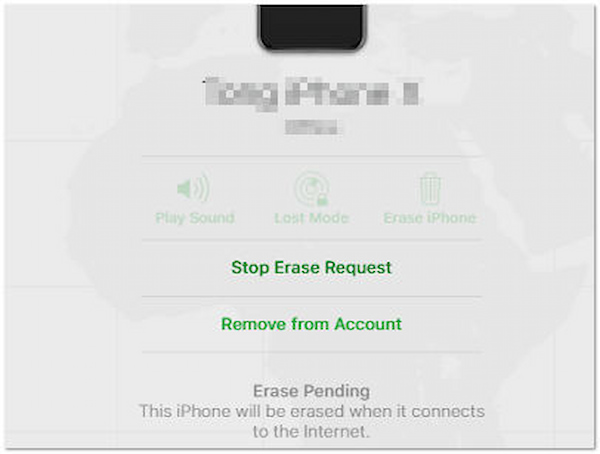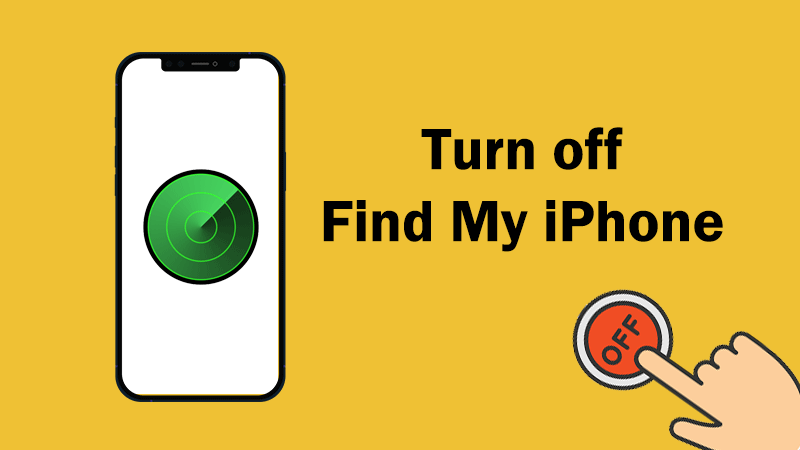Deactivate Find My Iphone Without Password

Imagine the knot in your stomach. You’re locked out of your Apple account, a digital ghost haunting your own device. Your iPhone, usually a seamless extension of yourself, is now a brick, stubbornly refusing to relinquish control. The dreaded "Find My iPhone" feature, designed to protect your data in case of loss or theft, has become your digital prison, and you've forgotten the password.
This article explores the complex issue of deactivating Find My iPhone without the associated password. It delves into the background of this security feature, the scenarios where bypassing it becomes necessary, and the legitimate, though often challenging, methods available to regain control of your device. While bypassing security measures can be a slippery slope, understanding the process when faced with a genuine forgotten password situation is crucial.
The Double-Edged Sword of Find My iPhone
Find My iPhone, now integrated into the broader Find My app, is a cornerstone of Apple's security ecosystem. It allows users to track their devices, remotely lock them, and even erase their data if lost or stolen. This feature has proven invaluable in countless situations, recovering misplaced devices and deterring theft.
However, the very strength of this security feature can become a source of frustration when users forget their Apple ID password. The system is designed to be robust, making it intentionally difficult to bypass its security protocols. This is because unauthorized access could lead to serious security breaches.
Why You Might Need to Bypass Find My iPhone
There are several legitimate reasons why someone might need to deactivate Find My iPhone without a password. Perhaps the user bought a second-hand iPhone only to find it still locked to the previous owner's account. Or a family member might have passed away without leaving clear instructions on how to access their Apple ID.
In other cases, the user might have simply forgotten their password and recovery email, or the recovery email address is no longer active. These situations can leave users in a difficult position, effectively locked out of their own device.
Apple's Official Channels: The Preferred Route
The first and most recommended approach is to go through Apple's official channels. Apple prioritizes account security, and rightly so. They have a defined password recovery process in place.
Typically, this involves answering security questions, using a trusted phone number or email address, or utilizing account recovery. Account recovery is a process designed to let you regain access to your Apple ID account if you don’t have enough information to reset your password immediately.
If you have set up two-factor authentication, you can use a trusted device to reset your password. If you don't have access to a trusted device or phone number, you can initiate account recovery, a process that could take several days or even weeks, as Apple verifies your identity.
Providing Proof of Ownership
If standard recovery methods fail, contacting Apple Support directly is crucial. Be prepared to provide proof of ownership, such as the original purchase receipt or other documentation linking you to the device. This is vital to convince Apple that you are the rightful owner and not attempting to circumvent security measures for malicious purposes.
Apple may require you to visit an authorized service provider or Apple Store. The technician can then examine the device and verify your identity and proof of purchase. This approach provides an extra layer of security for both Apple and its customers.
Navigating Third-Party Software: Proceed with Caution
The internet is rife with third-party software claiming to bypass Find My iPhone without a password. While some of these tools may appear promising, exercising extreme caution is essential. Many are scams designed to install malware or steal personal information.
Using unauthorized software can also void your device's warranty and potentially render it unusable. It's a high-risk gamble with potentially devastating consequences. Be warned!
"Before considering any third-party solutions, always research the software thoroughly, read user reviews, and verify its authenticity," advises cybersecurity expert, Mark Johnson.
He also stresses the importance of downloading software only from reputable sources and scanning it for malware before installation. Even with these precautions, the risks remain substantial.
Legal Considerations and Ethical Implications
Attempting to bypass Find My iPhone without proper authorization can have legal ramifications. In many jurisdictions, it is illegal to tamper with security measures on a device that doesn't belong to you. Even with a genuine ownership, one should consult with legal advisor, so that all the actions are within the boundaries of legality.
Furthermore, bypassing security features raises ethical concerns. Circumventing Find My iPhone on a device that was stolen or lost could inadvertently facilitate illegal activities and compromise the owner's privacy.
When All Else Fails: Salvaging the Device
In some unfortunate situations, all attempts to deactivate Find My iPhone may prove unsuccessful. This can be particularly disheartening when the device is genuinely owned but inaccessible.
In such cases, consider recycling the device responsibly. Apple has a robust recycling program that allows you to dispose of your old electronics in an environmentally friendly manner.
While you might not be able to use the device itself, some of its components could be salvaged and reused. This is a much better option than simply discarding it and contributing to electronic waste. Also, consider contacting a specialized data recovery service, if you have precious data inside that you must recover.
A Note on Prevention
The best way to avoid the headache of being locked out of your iPhone is to take preventative measures. Ensure that your Apple ID password is strong and memorable (or stored securely in a password manager). Keep your recovery email address and phone number up-to-date.
Consider adding a trusted contact to your account. This allows a designated person to help you regain access to your account if you ever forget your password. Finally, familiarize yourself with Apple's account recovery process before you need it.
These simple steps can save you a great deal of trouble down the line and ensure you never find yourself locked out of your own digital life.
The ordeal of being locked out of your own device can be a frustrating and unsettling experience. While there are ways to navigate this challenge, the safest and most reliable path is always to prioritize account security and adhere to Apple's official procedures. By understanding the complexities of Find My iPhone and taking proactive measures, you can safeguard your device and maintain control of your digital life. And if all else fails, remember that seeking professional help and exploring responsible disposal options are always viable alternatives.
![Deactivate Find My Iphone Without Password 5 Ways to Disable Find My iPhone without Password [iOS 7 and Later]](https://www.passixer.com/uploads/sites/1033/turn-off-find-my-with-password.jpg)

![Deactivate Find My Iphone Without Password 5 Ways to Disable Find My iPhone without Password [iOS 7 and Later]](https://www.passixer.com/uploads/sites/1033/delete-icloud-account-ios-7.jpg)
![Deactivate Find My Iphone Without Password How to Turn off Find My iPhone without Password [iOS 7-18]](https://www.magfone.com/images/resource/disable-find-my-iphone-in-settings.jpg)

![Deactivate Find My Iphone Without Password 5 Ways to Disable Find My iPhone without Password [iOS 7 and Later]](https://www.passixer.com/storage/type-wrong-password-done-1.jpg)

![Deactivate Find My Iphone Without Password [Guide] How to Turn Off Find My iPhone Without Password?](https://images.unictool.com/unictoolen/assets/images/product/upassit/turn-off-find-my-iphone-without-password.png)


![Deactivate Find My Iphone Without Password 5 Ways to Disable Find My iPhone without Password [iOS 7 and Later]](https://www.passixer.com/storage/find-my-iphone-disabled-2.jpg)
![Deactivate Find My Iphone Without Password [Update] How to Turn off Find My iPhone without Password on iPhone](https://www.cocosenor.com/images/articles/iphone-ipad/turn-off-find-my-iphone-without-password-on-iphone/turn-off-find-my-iphone-without-password-on-iphone.png)
![Deactivate Find My Iphone Without Password How to Turn off Find My iPhone without Password [iOS 7-18]](https://www.magfone.com/images/resource/remove-iphone-from-apple-id-via-find-my.jpg)
![Deactivate Find My Iphone Without Password How to Turn off Find My iPhone without Password [iOS 7-18]](https://www.magfone.com/images/resource/delete-icloud-account.jpg)
![Deactivate Find My Iphone Without Password [Complete] How to Remove Apple ID Without Password](https://mobiletrans.wondershare.com/images/images2024/how-to-remove-apple-id-without-password-01.jpg)



